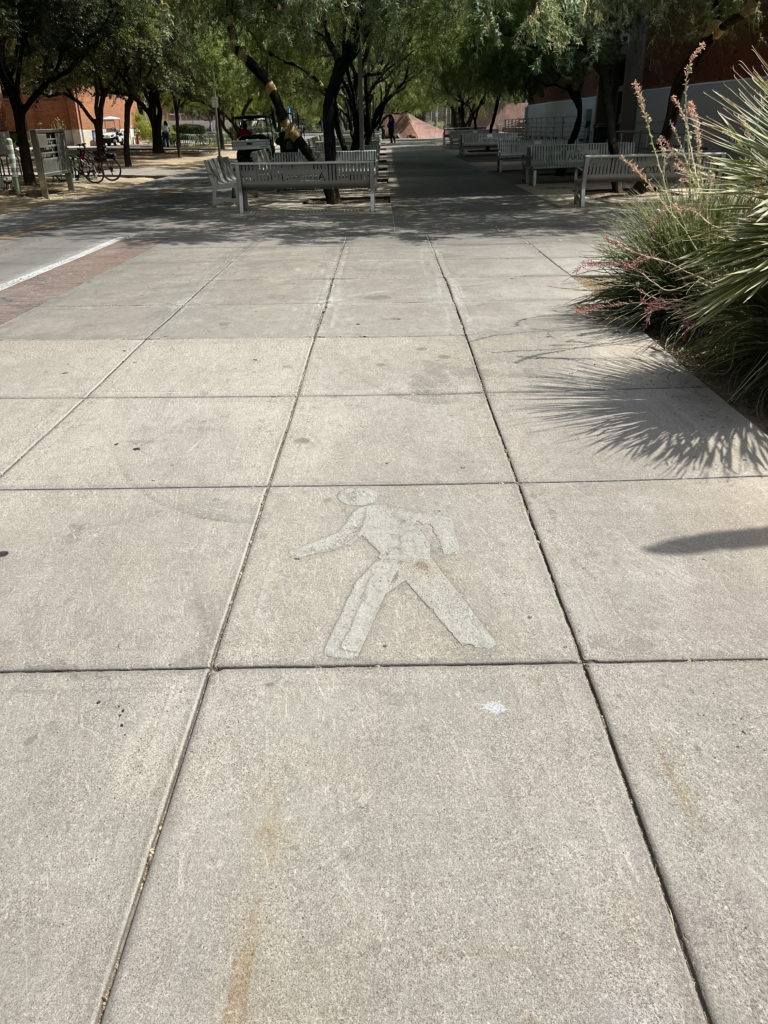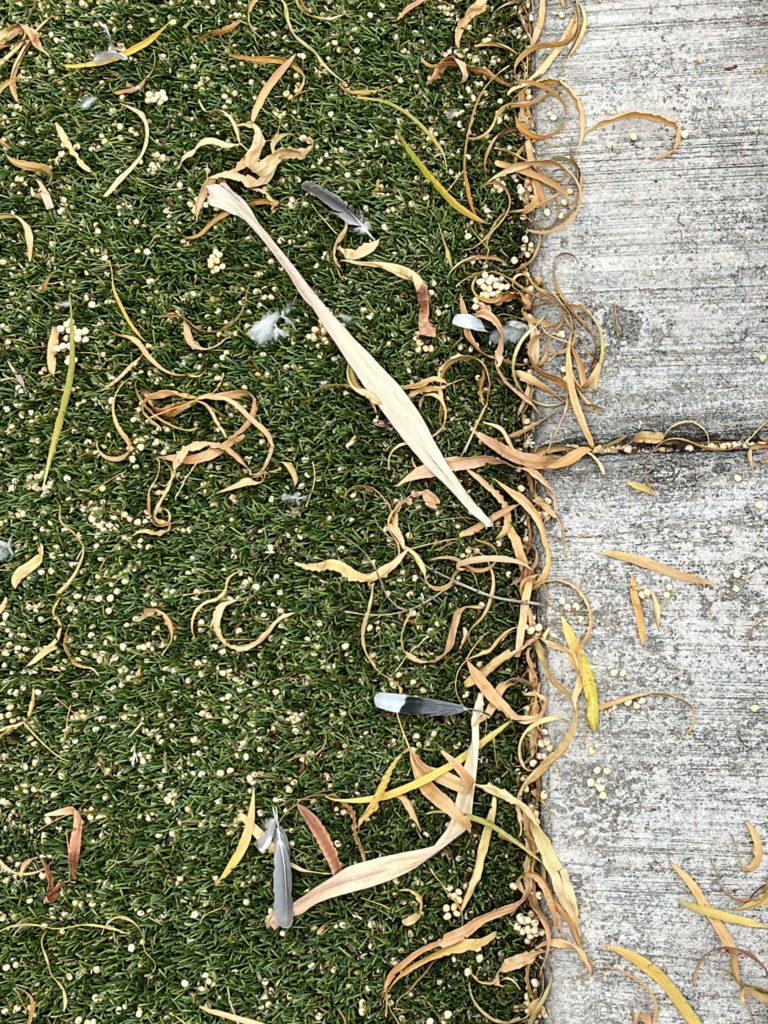“Freedom in Restraint” Proposition – Zhiyu (Gabby) Wen
- Take a walk somewhere other than your home that you are familiar with. It can be a work building, a street you walk down every day, a park you frequently go to, or a route you take to get to work or school. You must be able to walk around this location FREELY.
- Please be aware of the restraints in this area and pay attention to them. For example, a stop sign.
- Introduce the location you chose to carry out the proposition (Where is this place? Why is this place familiar to you?)
- Use pictures, movies, audio, drawings, or other means of documentation to record the moment you encounter the restraints, and write down your replies to the following three questions (1 to 3 sentences each):
- Describe this restraint.
- What is the impact of this restriction of freedom on my life?
- What would my life and others’ lives be like if this restriction did not exist?
*Please locate three restraints and write a short paragraph about what you have learned from this proposition.
The campus of the University of Arizona in Tucson, Arizona is where I selected to carry out the proposition. Since July of last year, I’ve been walking around the campus. Almost every week, I walk there at least once. Some buildings and locations on the campus are recognizable to me, but I still need to use Google Maps for others. I drove from my apartment, parked my car in the garage, and walked to the Center for Digital Humanities on the day I was carrying out the proposition.

The first restraint I saw that day was Figure 1, a double-line place indicating where and how I should park my car. The options for parking my car were limited because of this restraint. I had to parallel park my car between the double lines and put it in the position between the double lines. If the double lines didn’t exist, I’d be free to park my car anywhere I wanted in the garage. However, if they did not exist, people would be free to park their cars in whatever way they wanted, perhaps resulting in chaos and a lack of order in the garage.

The second restraint I encountered that day was Figure 2. On the floor, there was a human-like sign indicating which way I should walk. This restraint had the effect of indicating where I should go and limiting where I can walk. My route to the Center for Digital Humanities might be a bit shorter if this restriction did not exist. However, if I end up walking in the bicycle lane, I may be struck by a bicycle.

The third restraint I encountered that day was Figure 3. “Do not prop door after hours,” it said on a sign on a door. It said that if the door is propped, the alarm will activate. As far as I’m concerned, this sign has no bearing on my personal freedom because I’ve never gone to this building and don’t intend to go there in the future. However, I suppose that if someone accidentally stumbles into this door after hours, the alarm will go off, causing both the individual and the security to be inconvenienced.
This proposition has taught me that there is no such thing as absolute freedom in this world since freedom comes with a cost, and freedom is bounded by restriction. At the same time, without restraint, there is no freedom. Where there is freedom, there is restraint. There will be anarchy if there is just freedom and no restraint, and imprisonment if there is only restraint and no freedom.
——————————————————————————————————————————————————————————————————————————————————–
Tomine’s proposition – Find your path
Please read the whole proposition before starting and bring with you what you need.
Walk a bit from your home and find a path you want to follow. Document where your feet are going. You can take a photo, make a video, collect sound, some material from the ground or make a drawing, or another way you feel comfortable with. Walk until you feel like and want to stop. Describe why you followed that path, why you stopped and why it is a path to you. Write a paragraph with 3-8 sentences.
Answer this question if you want to: Does anybody else feel the same way as you about this path, use your imagination or look for signs from other people?
Walk from where you ended up and walk where you do not feel like walking back. Describe in words why you did not want to walk here, and document where your feet are going. You can take a photo, make a video, collect sound, some material from the ground or make a drawing. Where did you head, and feelings go while your feet were walking there? Walking is very daily to most people, what happened when you walked out of where you were drawn to? Use the questions as a guide to reflect over why you did not feel like walking some place but had to walk that way back?
Remember to look down and do not walk some place you can get hurt. Imagine the path you find as your comfort zone and walk outside of it, but remember that you are in charge.

I decided to walk the path that leads from my apartment to the neighborhood’s large garbage can since I walk on it practically daily and am thus quite familiar with it—I’m sure I can walk on it while my eyes closed and would be fine. To break down the most familiar path into smaller details that I have not previously observed, I would want to record it. I shot the photo in Figure 4 while walking along this path. I had no idea that the fact that there were bird feathers on the grass indicated the presence of birds in the area, some of which may have nests in the nearby trees. You can hear some birds chirping in the audio clip below if you pay close attention. I also noticed that my footsteps had a robotic sound from the audio of the path. Since I’m so used to walking, the sound of my steps struck me as odd. The proposition, I suppose, has taught me that sometimes, even the most familiar things in life may come as a surprise.
Dear Gabby. Thanks a lot for your response to module 2. I think your work both with creating and practicing your own proposition and with practicing Tomine’s proposition is very interesting. In particular I like your pictures and reflections on freedom and restraint in relation to your own proposition. We were having similar reflections when working with the ‘walk on borders’-proposition. That sometimes borders and other restraints can be experienced like possibilities rather than limits. The same actually counts for learning. We will talk more about that in Lesvos 🙂
Hi Helene, thank you for liking my proposition and my practice. I’d love to discuss more of this with you in Lesvos!
Good. Have you been in contact with Tomine regarding your experiences with the propositions? She has uploaded her reflections now 🙂